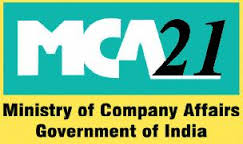 The RBI’s move to regulate the peer-to-peer (P2P) lending business has evoked good response with most participants saying that it could provide greater confidence to lenders and borrowers, as also to venture capitalists. The space has some 35 startups now and more than 20 of them were founded just last year, according to data from startup tracking platform Tracxn. They have collectively attracted only $7.5 million in venture funds, and the ones that have received the most funds include Faircent, Milaap, iLend, RangDe, LendenClub and LoanCircle.
The RBI’s move to regulate the peer-to-peer (P2P) lending business has evoked good response with most participants saying that it could provide greater confidence to lenders and borrowers, as also to venture capitalists. The space has some 35 startups now and more than 20 of them were founded just last year, according to data from startup tracking platform Tracxn. They have collectively attracted only $7.5 million in venture funds, and the ones that have received the most funds include Faircent, Milaap, iLend, RangDe, LendenClub and LoanCircle.
“VCs have so far shied away from the industry due to lack of recognition and regulation of the segment,” says IDG Ventures partner Karan Mohla, adding that the proposed regulation will help the sector grow the way microfinance did.
P2P lending typically involves a technology platform that brings together borrowers and lenders, often individuals. The borrower can place his/her requirements, and lenders can bid to service that borrower. Normally, the platforms insist on more than one lender servicing a single borrowing requirement to reduce risks. The interest rate may be set by the platform or by mutual agreement between the borrower and lender, or through an auction where lenders place bids. The platform does a preliminary assessment of the borrower’s creditworthiness, and they also collect the loan repayments. Over time, the platforms could automatically develop creditworthiness scores. Borrowers and lenders both pay a fee to the platform for these services. The average interest rates on these platforms tend to be high at 20% and the loan amount is an average of around Rs 1 lakh. Most borrowers are self-employed or those with salaries above Rs 6 lakh per annum. Most platforms charge around 2.5% of the loan amount as commission, from both parties.
The RBI is looking at factors such as what should constitute P2P lending, the legal framework, whether to set a maximum interest rate, and how to differentiate it with crowd-funding. It is, for now, looking to categorize them as non-banking financial companies (NBFCs).
“The potential benefits that P2P lending promises to various stakeholders (to borrowers, lenders, agencies, etc) and its associated risks to the financial system are too important to be ignored,” says the RBI consultation paper. The UK-based Peer-to-Peer Finance Association (P2PFA) estimates that lending through the channel globally has grown dramatically from 0.2 billion pounds in the first quarter of 2012 to 5.1 billion pounds in the first quarter of 2016.
Apoorv Sharma, founder of Venture Catalyst and an investor in LenDen, says P2P in India is still in its early stages but the government’s involvement could drive rapid growth.
Faircent, one of the largest platforms in the country, believes that the new norms will accelerate the growth in the sector – similar to how RBI regulations helped the e-wallet sector. The company has raised funding from Aarin Capital, M & S Partners and others. It has disbursed more than Rs 4.5 crore to beneficiaries so far and it is looking at loans of more than Rs 60 crore this fiscal.
Abhishek Periwal, founder of P2P platform KountMoney, said that regular banking channels don’t cater to lots of self-employed people. “P2P lending platforms come into play here, as they are faster than banks and NBFCs,” he said. Bhavin Patel, founder of LenDen Club, which started in 2015, believes the RBI regulation will be a confidence booster but has reservations about the regulator’s proposal that payment should happen directly between the borrower and the lender and that P2P platforms should have brick-and-mortar offices. He thinks the former will make monitoring and control difficult, and the latter is unnecessary. “A lot of our plans have been put on hold due to these uncertainties,” said Patel, whose platform has more than 2,000 borrowers and 900 lenders.





